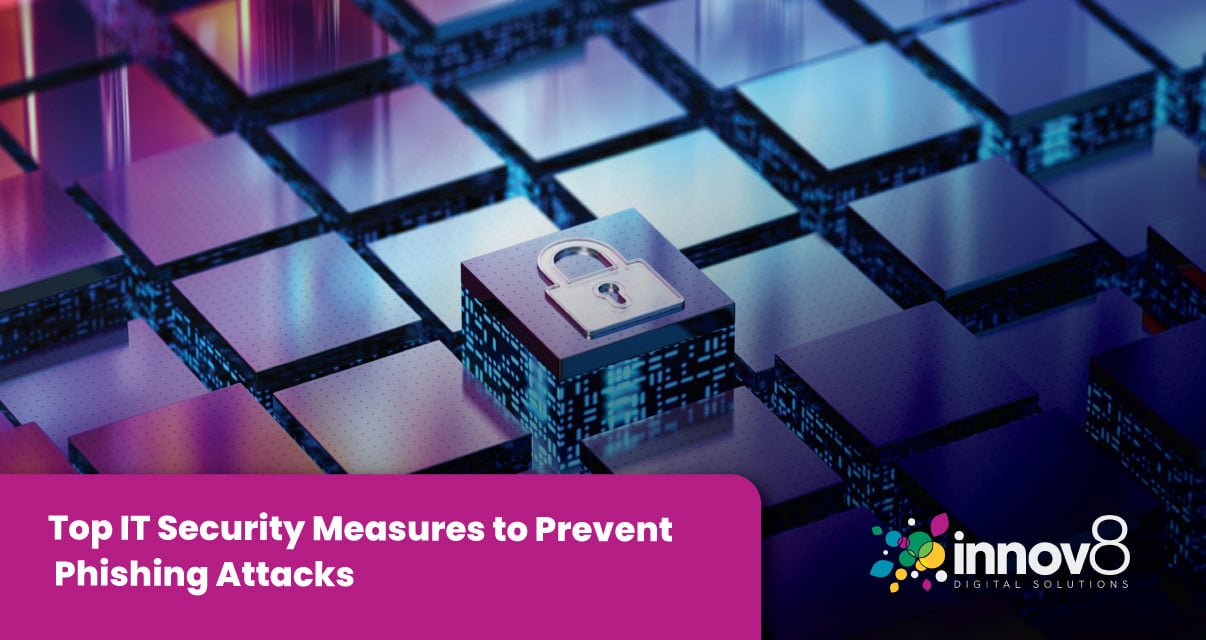Phishing attacks, which deceive users into providing sensitive data by masquerading as legitimate requests, pose significant risks to businesses, including financial losses and breaches of customer trust. Here are the most effective managed IT security strategies businesses can implement to defend against these threats.
1. Comprehensive Employee Training
Teaching employees about the risks of phishing attacks and how to recognize suspicious emails and links is the first line of defence. Businesses should conduct regular training sessions to keep employees aware of the latest phishing tactics and use simulated phishing exercises to practice identifying and reporting potential threats.
2. Advanced Email Filtering
Using advanced email filtering solutions can help intercept phishing emails before they reach users. These systems scrutinize incoming messages for suspicious links, attachments, and sender information. Implementing protocols can also validate emails, ensuring they have not been altered in transit.
3. Multi-Factor Authentication (MFA)
MFA requires users to provide two or more verification factors to access their accounts, adding an extra security layer. This measure makes it much harder for attackers to breach accounts, even if they manage to steal credentials.
4. Regular Software Updates
It is essential to keep all systems and software updated to protect against phishing attacks. Cyber attackers often target vulnerabilities in outdated software. Regular updates apply security patches, reducing the risk of these vulnerabilities being exploited.
5. Secure Web Gateways
Secure web gateways prevent users from accessing malicious websites by monitoring traffic in real-time and blocking access to phishing sites based on analytics and blacklists. This prevents employees from inadvertently entering confidential information on fraudulent sites.

6. Anti-Phishing Toolbars and Browser Extensions
Anti-phishing toolbars and browser extensions can provide an additional layer of security by comparing visited websites against lists of known phishing sites. These tools alert users when they are about to enter potentially dangerous sites.
7. Endpoint Security Solutions
Endpoint security solutions protect network endpoints such as desktops, laptops, and mobile devices from malicious campaigns. Using antivirus software, anti-malware, and intrusion prevention systems is essential for detecting and responding to threats.
8. Incident Response Plan
A well-defined incident response plan can minimize damage from a phishing attack. This plan should outline procedures for containing and eradicating threats, recovering data, and notifying affected parties. Regularly updating and practicing this plan is necessary as phishing tactics evolve.
9. Data Encryption
Encrypting sensitive data, both at rest and in transit, ensures that intercepted data during a phishing attack remains unreadable and secure. Encryption deters attackers, as decrypting the data may require more effort than the potential gain.
10. Regular Security Audits
Businesses should conduct regular security audits and penetration testing to identify and address vulnerabilities in their network that could be exploited through phishing. External cybersecurity experts should carry out these audits to ensure they are comprehensive and unbiased.
Enhance Your Business's Cybersecurity
Elevate your company's protection with Innov8's premier managed IT services, featuring top-notch managed print solutions. Innov8 offers a range of essential services, including On-Site and Remote Support, RMM and Patch Management, Co-Managed IT, Backup and Disaster Recovery, Hardware and Software Procurement, Microsoft 365 Services, and robust Cybersecurity solutions. Secure your business's future with our comprehensive IT and print solutions today.
Explore our services to see how Innov8 can drive your success.


